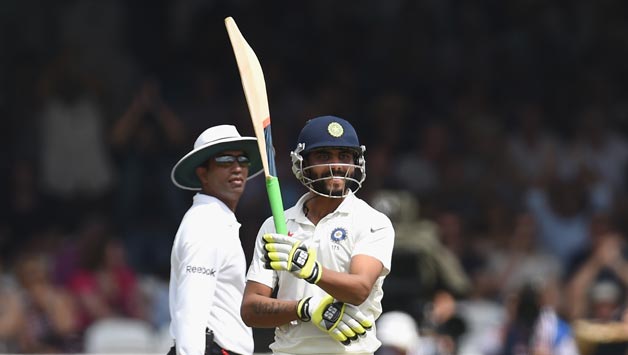Ravindra Jadeja was penalised 50% of his match fees by the ICC for “causing avoidable damage to the pitch during an international match.”
While making 17 off 27 balls, he was pulled up by umpire Bruce Oxenford for running down the middle of the pitch repeatedly which led to New Zealand being awarded five penalty runs.
The ICC release said “Jadeja, after previously receiving two informal and one official warnings, infringed the protected area for the fourth time and damaged it.” As per a revision of the code of conduct, Jadeja has also been slapped with three demerit points. If he receives one more demerit point, within a two-year time frame, he could be suspended from one Test, or two ODIs or two T20Is, whichever comes first.
This is not the first time Jadeja has been in such trouble in this series. In Kolkata, he was warned twice for cutting across the pitch and the danger area when appealing for a wicket.
The umpires don’t need to attach motive to the transgressions of players, they are there to penalise the actions, but for a Test player to run on the middle of pitch even after being warned has rung the alarm bells for New Zealand.
Their coach, Mike Hesson, said only a few words but he got the message across. “Surface is still pretty good, I think it’s fair to say footmarks are building as they tend to do, but the body of the surface is still very good. I’m sure the umpires will maintain that.”
If a bowler encroaches upon the danger area, he is taken out of the attack for the rest of the innings after due warnings. However, a similar transgression from a batsman – he is clearly doing the same job as a bowler does by running on the danger area – costs the team only five runs. In terms of keeping an ongoing match even – and since suspensions affect a totally different match – it is perhaps one of the anomalies of the cricket rules that might need revisiting.
When asked about the discrepancy, Hesson said: “In countries where the wickets deteriorate like this, the umpires have to be very decisive around how the look after the middle of the wicket. There are rules in place and the need to stick to those.”
For a little while, Indian pitches have come under scrutiny. They have contributed to a change from the old ways when big hundreds and totals above 500 were routine. Virender Sehwag, who used to score a lot of the former, and play a part in the latter, told the host broadcaster before the second day’s play that he used to make his runs on surfaces that began breaking up late in the third day whereas now they are so worn they offer turn from ball one.
Perhaps these pitches were a response to improving bats, a more cavalier attitude of the batsmen towards spin and to teams knowing Indian conditions better than they used to. Or maybe it was just the desperation to win.
Whatever may be the case, the pitch in Indore didn’t turn from ball one. Yet the footmarks can be seen and there were puffs of dust by the end of day two. New Zealand, who are trailing by 529 runs, might have to get as much as possible in their first innings because batting last might become an ordeal. They were given five bonus runs, though, even before they had walked out to bat.
This has been a series played in tough conditions, but it has largely been carried out in good spirit. That doesn’t mean teams won’t look to take any advantage they can get. Hesson had earlier acknowledged that India managed to get reverse swing soon after getting the ball changed, and that that was something they had tried to do as well. Appealing has been a bit of an issue, but Ross Taylor laughed it off saying his side was always going to be out-appealed in India.
As India push for a whitewash having put the runs on the board, they will look for every advantage staying within the limits of the laws. The onus will be on the umpires to enforce those laws and playing conditions.
Source : espncricinfo

